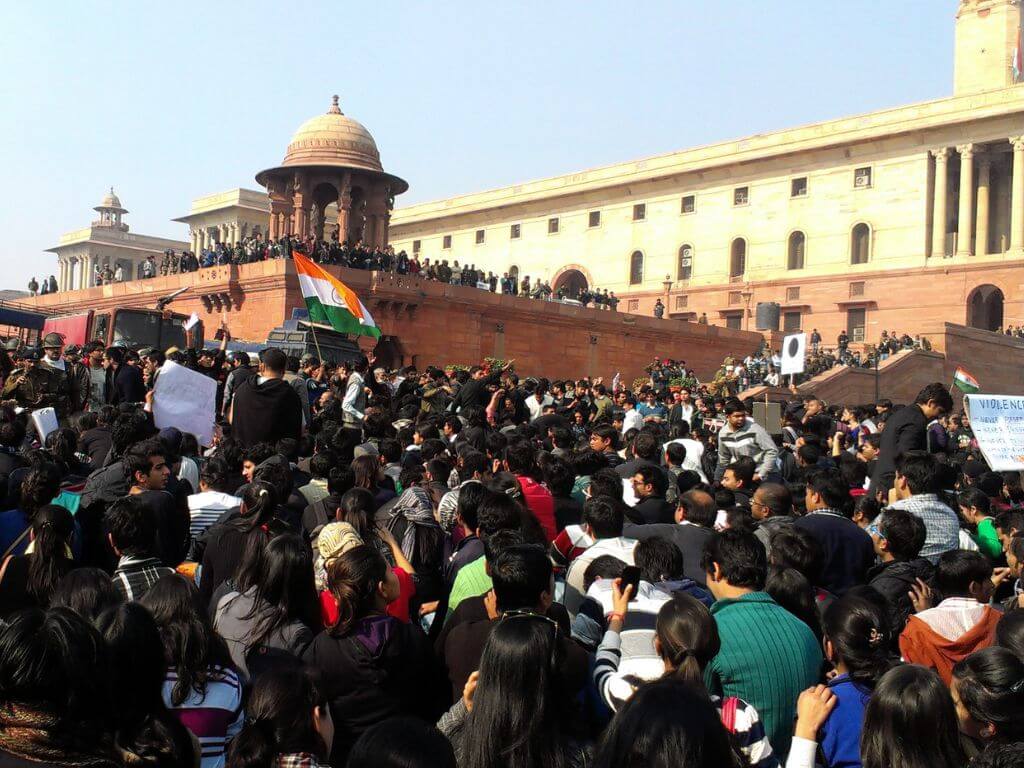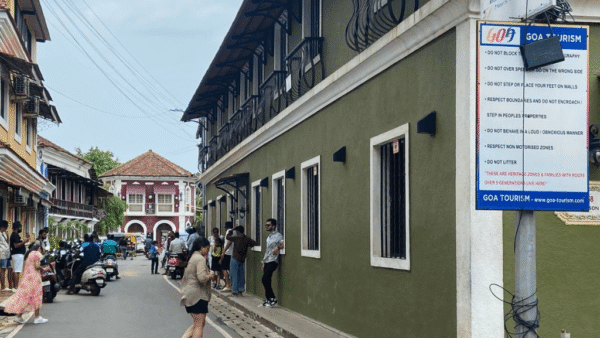As the grand ceremony was underway this May 28 to inaugurate the new Parliament building of India, where the will and voice of Indians are represented, international medal-winning wrestlers marched towards it from their protest site at Jantar Mantar. Sakshi Malik, Vinesh Phogat and others, who had accused the chief of Wrestling Federation of India of sexual harassment, did not make it to their destination. Instead, they were restrained, shoved to the ground with brute force by the Delhi Police, and detained for the day.
The irony of muffling their voices on the day that the new Parliament complex was being inaugurated was not lost on many. Their protest at Jantar Mantar from January had gone unheard by those in power. Removed from this protest space, they began a sit-in at India Gate two days later. The Delhi Police disrupted that too saying, “This is a national monument, not a protest site”. Jantar Mantar and India Gate are situated only a few kilometres from the Parliament, yet appear so distant. The restriction at India Gate was particularly gnawing because it had been the theatre of large and impactful protests before Prime Minister Narendra Modi assumed office.
In New Delhi, Mumbai, Bengaluru, Jaipur and most other cities, protests and protesters are no longer tolerated or allowed to occupy the space they used to. Public spaces such as maidans, city squares, prominent landmarks and monuments have been gradually circumscribed and cordoned off by governments, at the Centre and in states, that are unwilling to have such voices question the dominant narrative they set. Instead, dissenters and protesters when not detained or jailed, are refused permission to protest – the need for permission itself a paradox in a democracy – or are shoved into locations away from the public eye which, in a sense, weakens the purpose of the protest.
Public spaces, by definition, belong to people. They should be accessible and used for purposes that people determine within the ambit of maintaining societal peace, though the purpose of some protests is to challenge societal order and comfort. To make issues visible to people, to be heard by the government of the day is the raison d’etre of any protest. Hence, the need for public spaces.
Public spaces are held and managed by governments on behalf of people – as custodians, not owners. When we are told that the India Gate, the locus of massive demonstrations over decades, especially in December 2012 after “Nirbhaya” rape case, cannot be a protest site any more, it epitomises India’s journey of the last decade from a flawed democracy to a badly broken one. If protests are discouraged or disallowed in public spaces, where should they be held?
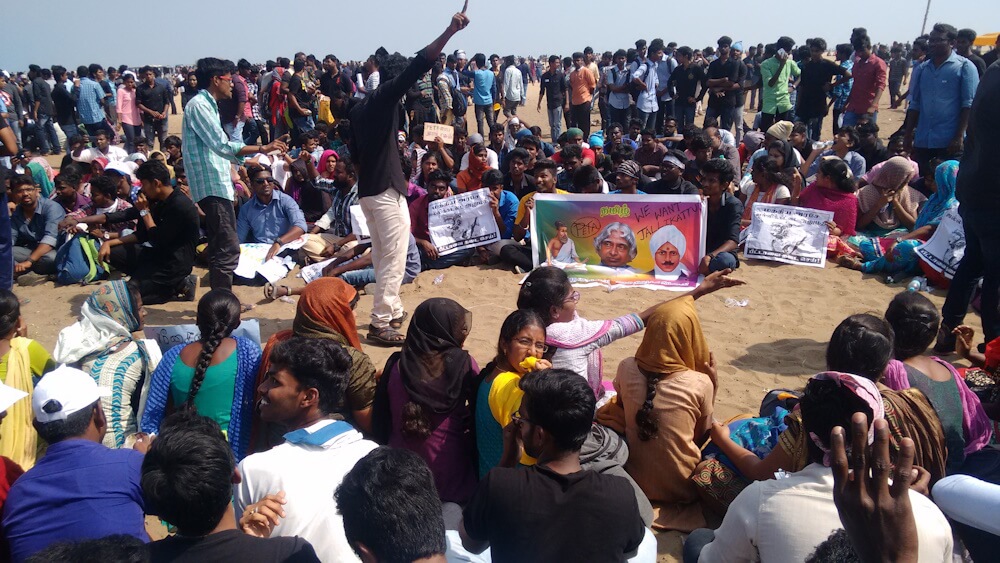
Photo: Creative Common
Urban movements
Cities, by their very character, produce social and political conflict especially compromising socio-spatial needs and rights of the marginalised. It follows then that students, women, non-binary genders, environmental activists, housing rights campaigners and other groups want to articulate the abuse and lack of amenities they face in the hope of change. As increasing privatisation, gentrification, and Climate Change-triggered ecological crisis make life in cities less liveable, people are bound to respond with collective action or social movements.
“The civil sphere…is where problems are defined, articulated and, in some cases, resolved. These processes, some argue, led to the emergence of specific civil society actors, namely urban social movements,” suggested Anna Domaradzka, from the Institute of Social Studies at University of Warsaw.[1] Urban movements according to sociologist Hans Pruijt, Erasmus University in Rotterdam, are “social movements through which citizens attempt to achieve some control over their urban environment (which) comprises the built environment, the social fabric of the city, and the local political process”.
Ranging from advocacy and provision of services to political representation and neighbourhood-level problems, as Domaradzka describes them, these movements naturally claim a right to the city. While articulating specific demands, they also engage with cities and seek to shape the “production of space” as sociologist Henri Lefebvre, who gave us the phrase ‘right to the city’, termed it. Protesters have as much, or more, right to public spaces as cars have right to roads, both are manifestations of the right to the city.
Movements need public spaces for their members to congregate, initiate collective action, interact with people, be seen and heard. Modes of protest could be varied – sit-ins, demonstrations, marches, long marches, rallies, hunger fasts and so on – but all of them happen in public spaces. Streets that lead to the seat of the government, street intersections, city or town squares taking off from the old Greek agoras, plazas and boulevards characteristic of European cities, parks and gardens, large open maidans, landmark monuments, and other informal places are all protest spaces.
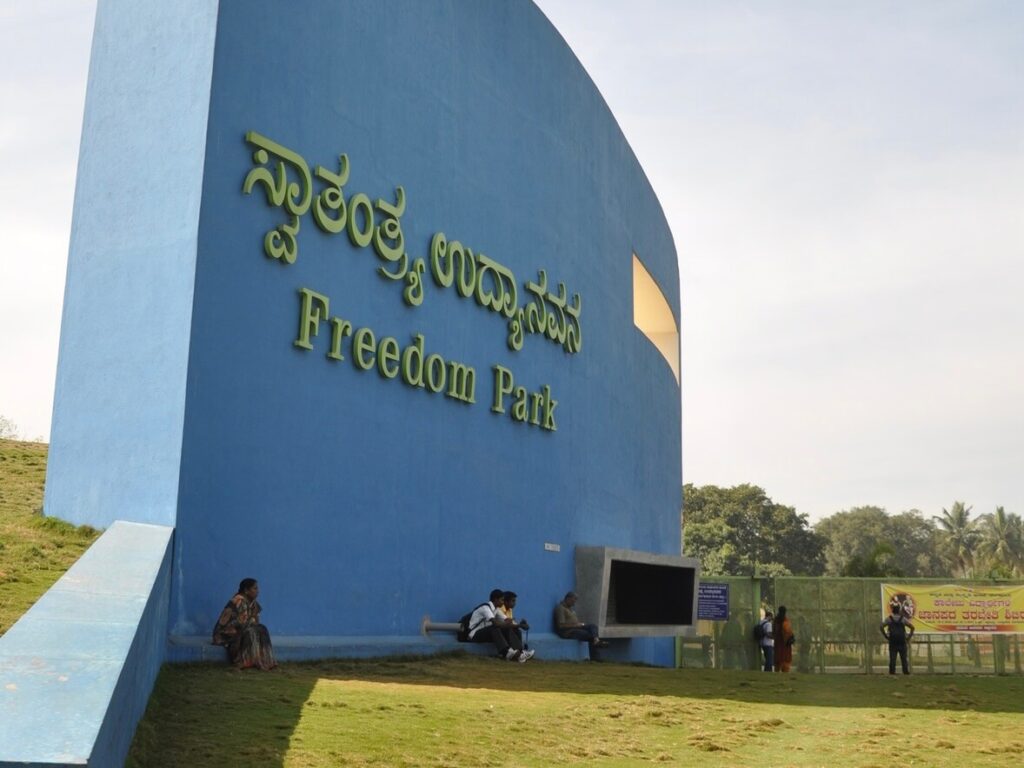
Photo: Creative Commons
‘Taking an issue to the streets’ has been a critical part of urban movements and trade union strategies. It makes issues visible to governments and to the public. The connections and interactions that happen when a movement or protest unfolds in a public space form part of people’s education, some of whom may even be inspired to support or participate. The use of public spaces also compels governments to engage with protesters and commit to action (though most get away by forming committees).
When housing activists, including actor Shabana Azmi, did a sit-in against wanton demolition of slums in Bombay in the 1980s, it brought the nation’s attention to the issue pressing the Brihanmumbai Municipal Corporation to halt the demolitions. Thousands of farmers marched to Mumbai and thousands of other farmers occupied sites outside Delhi acquainting city-dwellers, at least faintly, with their issues. The protests against the Citizenship Amendment Act across the country in late 2019 kindled debates; Delhi’s Shaheen Bagh became legendary.
Spaces, not designated spaces
To protest effectively, public spaces are essential. These spaces form – or should form – an inalienable part of people’s right to the city. And, as with any right, this too has to be claimed and asserted.
Increasingly, governments or authorities have discouraged and disallowed protests or kept protesters far from public view by confining them to designated spaces. These are usually walled-in spaces, with minimum public exposure, and regulated entry-exit points with tight police control – usually far away from the seat of power. This is ostensibly done for security reasons and to prevent the disruption of the traffic, but embedded in such restrictions is the politics of public space – who is allowed to use it.
From the pre-independence years up to the mid-1990s, Bombay had witnessed history-bending protests at Chowpatty, Hutatma Chowk, Gateway of India, and from Churchgate and Victoria Terminus (now Chhatrapati Shivaji Maharaj Terminus) to Mantralaya with thousands, even lakhs, lustily shouting slogans and making demands of governments or employers. By the mid-1990s, these spaces were made out of bounds for protesters as governments brought in rules and courts gave directions on petitions filed by the city’s elite.
No protest now reaches Mantralaya. Kala Ghoda, once a popular destination of protesters, is hailed only as the art and culture district. Protests and demonstrations have been confined to Azad Maidan, rather a designated section of its 25 acres. Often, half a dozen different protests are simultaneously underway in the allotted area, hardly visible or audible to anyone outside, compelling no authority to engage with protesters.
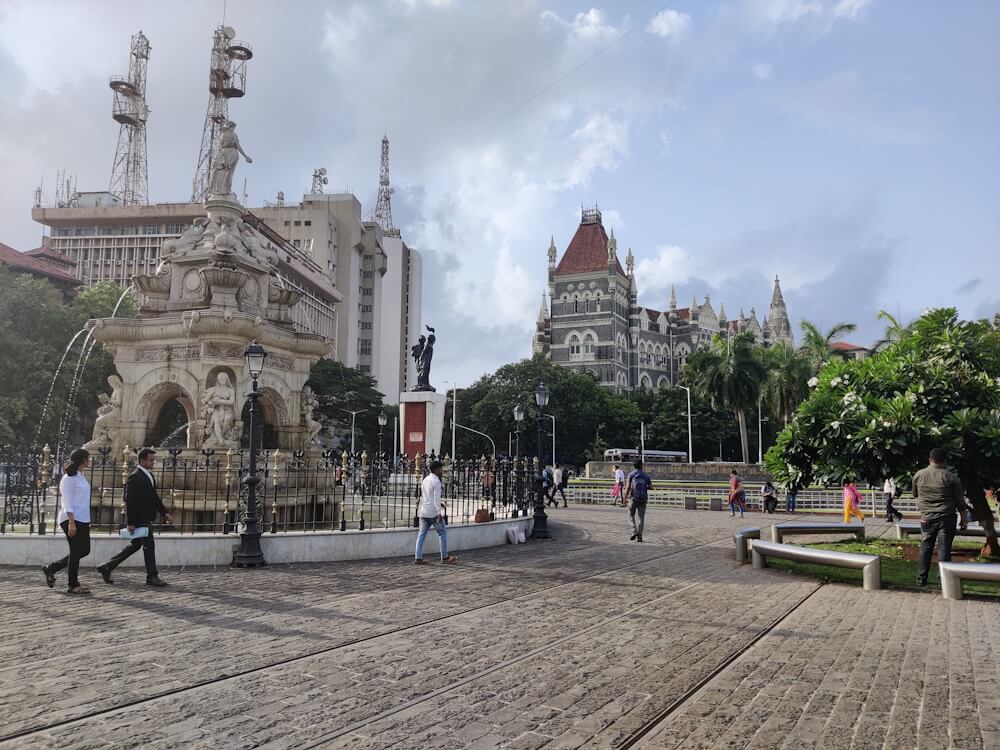
Photo: Jashvitha Dhagey
In fact, protest spaces have turned into recreational spaces, deliberately transformed by policy and design. Bengaluru’s Freedom Park, the official site for protests, now has museums, sculptures, water fountain, and an amphitheatre besides the dedicated area for agitations. It is “…recreation, entertainment, and activism all rolled in one,” observed Dr Mamta Mantri in her book Cities and Protests: Perspectives in Spatial Criticism, elaborating how the pattern repeated in Jaipur, Chennai, Lucknow and other cities. Jaipur’s Statue Circle which gave India the Right to Information but is known now for its cold coffee and beautiful lawns, a recreational space, she lamented.
Edged out, movements use available spaces – mostly streets – turning them into protest sites as in Delhi’s Shaheen Bagh. Then, the place comes to symbolise something bigger than the protest – an idea, a resistance, a battle. Shaheen Bagh now stands for determined defiance of the Modi government just as Bombay’s Gowalia Tank Maidan – renamed August Kranti Maidan after the Quit India agitation – and the streets around the small maidan represented the ultimate resistance to the British. Delhi’s streets near the Parliament saw huge protests over the decades, Mumbai’s arterial streets carry the legacy of trade unions-led long marches for workers’ rights, Chennai’s Marina Beach – out of bounds for protests – still drew lakhs of people on the Jallikattu issue.
Protest and urban design
Streets claimed by protesters and turned into theatres of resistance represent a high form of establishing or claiming the right to the city. Streets, unlike designated protest spaces, belong to everyone at once and are difficult to regulate. Lending themselves to fluid and flexible uses, encouraging interactions, and allowing protesters easy escapes in the event of a crackdown, streets have been and continue to be vibrant protest spaces across India.
Streets, unless totally shut down, have lesser scope for spatial control by governments than designated spaces. But streets, unlike designated spaces, are not designed for public protests; they are taken over, claimed and occupied as people assert their right to the city.
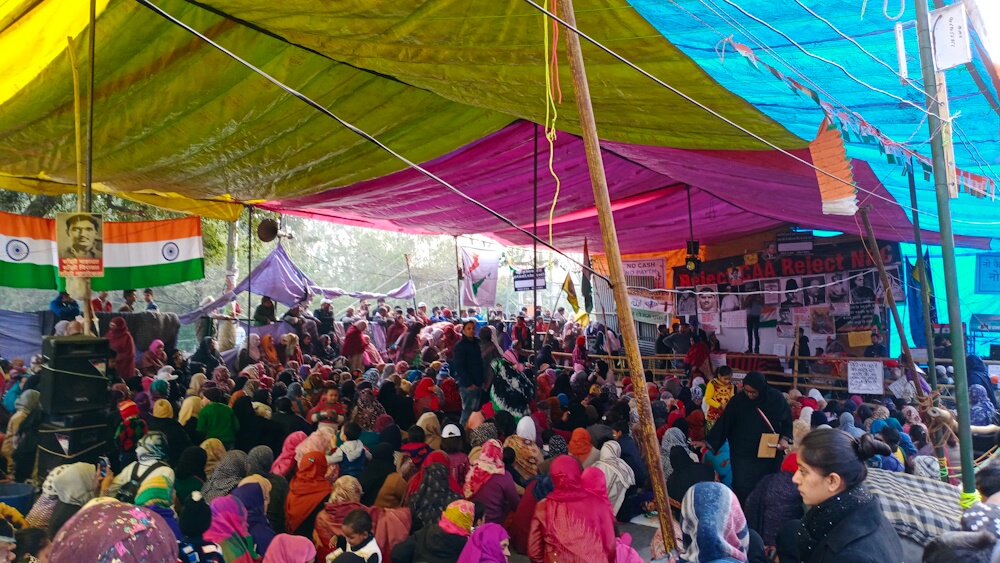
Photo: Creative Commons
Are some public spaces more conducive to protests than others by their design, does urban design influence movements, protests and, therefore, politics? In an era of online activism, as on-ground protests are subjected to surveillance and communication shutdowns, are public spaces and their design relevant? Public spaces matter because the online does not comprehensively replace real-world activism. The design of the spaces matters too. Connectivity, access to the space without jumping through government hoops, openness that allows protesters to be seen and heard, multiple entry-exit points, easy dispersal options for crowds are among the factors that determine how visible and loud – often how long – a protest is. Streets offer all these.
“In the modern history of democracies, where disruption must occur has been determined by a singular logic: to be within listening distance of the state, often precisely in the streets and corridors where one is not meant to be,” wrote Gautam Bhan, urban scholar who teaches at the Indian Institute of Human Settlements.[2] “When the Justices of the National Green Tribunal argue that all they are doing is to put protest in its proper and designated place, which they decided is Ramlila Maidan, they are following a rich tradition not of planning and designing of appropriate public spaces but of spatial control, of putting the people in their place.”
India Gate, though not designed for protests, offers the openness and fluidity besides the ear-shot distance to power; Jantar Mantar less so. Mumbai’s Gateway of India, Chowpatty, and Shivaji Park were more conducive to large protests than Azad Maidan. Chowpatty, in fact, had seen large anti-British rallies and protests, including the Salt Satyagraha in 1930; in January 2020, protesters were refused permission by the local police to even fly “No NRC” kites.
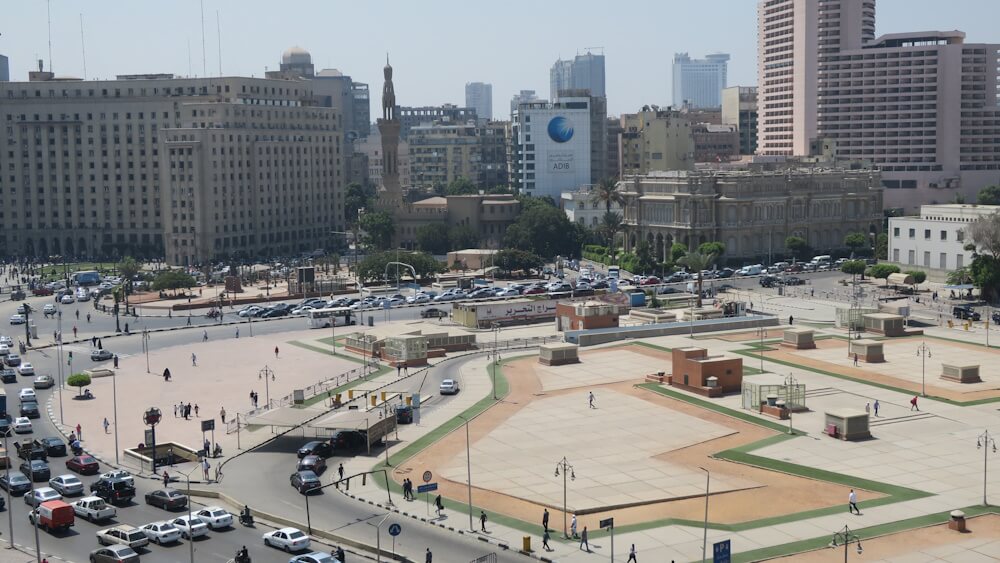
Photo: Terrazzo
During the Black Lives Matter protests in the United States, western cities where “the car is the king,” neighbourhoods are dispersed, and freeways are policed saw fewer protests than eastern cities with mass transit, smaller distances, and denser neighbourhoods though the lack of large public grounds meant protesters scattered as easily as they had gathered, pointed out writer Peter Schwartzstein[3] “New sunken walkways around the Washington Monument have broken up much of the space around its base, where large crowds often congregated in the past. New walls, new fences, and new barriers have isolated protesters from key government structures. Just initiating a legal protest on the National Mall has become tougher than ever,” he reflected.
After the pro-democracy protests in Tiananmen Square in Beijing, China, were brutally repressed by the Chinese government in June 1989, the 100-plus acres square was cleared of trees and benches lest people were drawn to it again. In a poignant recent instance, three years after the Arab Spring protests shook the world from Tahrir Square in Cairo, Egypt, three-feet high metal gates with spikes were erected to discourage crowd action.[4] In Tunisia, the Habib Bourguiba Avenue became the site of the 2011 revolution despite landscaping elements which did not help protesters. Academician Majdi Faleh commented, “the public square should not be represented as the city’s gated property or as a walled garden. It should be a space that provides citizens with opportunities to engage in political and social debates”.[5]
The hundreds of thousands gathered in Tiananmen Square, Tahrir Square, on Bourguiba Avenue, and millions who have repeatedly poured into the streets of Hong Kong over three decades claimed their rights in the face of water cannons, bullets and even tanks, demanding civil liberties. Indians and Americans, who have the right to protest, have to claim the spaces for it. Protests and protest spaces do form a part of our right to the city.
Smruti Koppikar is a Mumbai-based award-winning journalist, urban chronicler, and media educator. She has more than three decades experience in newsrooms in writing and editing capacities, she focussed on urban issues in the last decade while documenting cities in transition with Mumbai as her focus. She was a member of the group which worked to include gender in Mumbai’s Development Plan 2034 and is the Founder Editor of Question of Cities.
Cover photo: Nirbhaya protest reaches Raisina Hill in Delhi/Wikimedia Commons

